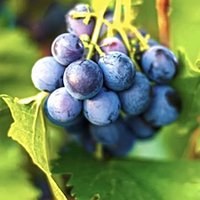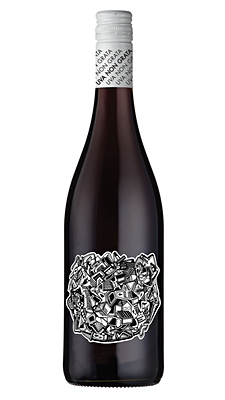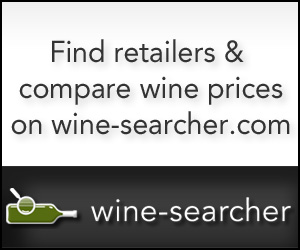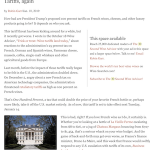Well, I did it again: In today’s tasting report on Uva Non Grata, a budget-priced French Gamay that performs way above its price point, I used that word “minerality.”
Buy me a glass of wine
Now you can buy me a “glass of wine” to chip in $5 toward our expenses. I don’t accept free wine, so every small donation helps support our expenses. Click to learn more! buymeacoffee.com/RobG
Browse the world’s ten best value wines on Wine-Searcher.com!
Nice word. I use it a lot. A quick search of my files indicates that I use it just about monthly in a tasting report, including today’s note.
But what does minerality mean? Is it even a word? As I wrote the last time I brought up this topic, “When I type the word ‘minerality’ into a tasting note, spell-check invariably bites back with an angry red underline declaring that there’s no such word. This seems unfair, as I love the stony, chalky, granite, slate, clay, oystershell, or rainwater-over-rocks character that distinguishes some of the world’s most subtle and interesting wines.”
“Minerality,” like the similar but broader French term “terroir,” creates some tension in the wine world for several reasons: There’s no firm consensus as to what it means; and insofar as there is consensus, the definitions has changed over time. Nowadays, particularly in regard to “minerality,” plenty of experts argue that the phenomenon doesn’t exist and the word shouldn’t be used at all.
Some wine writers get kind of rough about it. “Minerality is perhaps the wine industry’s most overused, underwhelming, and misunderstood descriptors of them all,” Vicki Denig wrote in an excellent Wine-Searcher.com article, Nailing the Myth of Minerality. “Though when it comes to the legitimacy of the term, the question still stands: does minerality in wine actually exist, or is it a simple cop-out used to fluff lackluster tasting notes?”
“A simple cop-out used to fluff lackluster tasting notes“!? Really? Can’t we all just get along?
I think the problem here, with Denig and other writers who’d like to, well, cancel “minerality” and maybe “terroir” too, is not that these terms are useless but that they are misused.
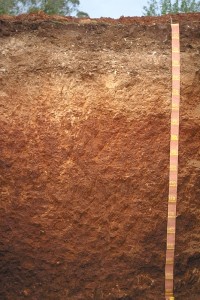
Loam over red clay, “Urrbrae Loam” (26% of the McLaren Vale Wine Region), image from DJS Growers Services in Adelaide, Australia.
Specifically, for many years “minerality” and “terroir” were similarly used, referring to an actual taste of earth, stone, or other minerals that were somehow mysteriously taken up through the roots and vines and into the grapes, where their stony, chalky flavors somehow showed themselves in the finished wine. And that ties in with “terroir” (French for “soil” or “earth,”) the idea that wines grown in a particular vineyard or piece of ground develop recognizable flavors derived from the makeup of the minerals in the soil at that location.
Let me back up and offer fresh, simple definitions that might better express what I’m getting at when I use them.
Terroir is, indeed, a distinct flavor or flavors that makes it possible, with training and practice, to recognize wine from a particular region or even a specific vineyard. This may come from a combination of geology, landforms, local microclimate, vine growing and wine-making techniques. Whatever the pardon-the-expression root cause, there is absolutely no question that the world’s greatest vineyards, from Burgundy and Bordeaux and onward, produce wines easily recognized by their sense of place: Terroir.
Minerality is an element of terroir that relates specifically to earth and stone: Subtle, intriguing flavors in some wines that remind the taster (i.e., me) of red clay or granite or chalk or rainwater bubbling over limestone in a stream.
So far, so good. But the idea that these tastes actually originated in the soil and were somehow translated directly into the grape has been pretty thoroughly debunked. So let’s agree not to go there, and when I tell you that I’m sensing “red clay minerality” in today’s delicious, bargain-priced Boutinot “Uva Non Grata” Gamay, please understand that I’m telling you about an elusive, intriguing aroma and flavor that I find in the wine, and that I’m making no claims as to its origin.
Or as Santa Barbara-based geologist Brenna Quigley told Wine-Searcher’s Vicki Denig in Nailing the Myth of Minerality, “In reality, minerality in wine is likely a much more complicated series of pathways and relationships between the physical and chemical environment of the soil, the vine’s physiology, and the winemaking.”
Support The Wine Advisor:
“Buy me a glass of wine”
Hi, everyone! As many of you know, I don’t accept free wine or other gratuities from the industry, so small donations and a select group of carefully chosen advertisers make this publication possible. Now you can lend a hand directly and cheaply: Buy me a glass of wine for just $5 to chip in on our expenses. Every ten contributions adds up to $50, enough to buy wine for review in at least two editions of The 30 Second Wine Advisor.
Click to learn more! buymeacoffee.com/RobG
Today’s Tasting Report
Boutinot 2020 “Uva Non Grata” Vin de France Gamay ($9.99)
Earthy yet refreshing, Boutinot “Uva Non Grata” Gamay lowers a backdrop of red-clay minerality behind a chorus of juicy raspberries, strawberries, and a hint of blackberries. On the palate it’s fresh and bright, fresh-fruit acidity and soft tannins surrounding and giving shape to mixed-berry and tart cherry fruit. Tart acidity and tannic astringency surround complex fruit and a distinct licorice note in a fairly long finish. 12.5% alcohol. U.S. importer: Boutinot USA Inc., Sanford, Fla. (Oct. 22, 2022)
FOOD MATCH: The producer suggests a carnivorous selection: a charcuterie platter, grilled herb chicken kebabs, or sausages on the grill. Wine-searcher.com agrees, suggesting it would pair well with chicken or turkey. A quick pasta dish topped with finely chopped, roasted fennel, onion, and garlic with parsley and Pecorino Romano cheese made a fine companion.
WHEN TO DRINK: I don’t see this simple (yet intriguing) Gamay as a long-term ager. Enjoy it relatively soon, and watch for the arrival of the 2021 vintage.
VALUE:
My $9 local price easily beat Wine-Searcher.com’s $12 average U.S. retail, but this happy little wine is a good value at any point in the lower to middle teens.
WEB LINK:
Here’s an importer’s fact sheet on this wine.
FIND THIS WINE ONLINE:
Locate vendors and compare prices for Boutinot “Uva Non Grata” Gamay on Wine-Searcher.com.
Read about the Gamay grape and check this Wine-Searcher link for dozens of other wines made using this grape.
Wine Focus October 2022:
Orange Wine, Carignan and Port
Now our monthly Wine Focus is really into Northern Hemisphere fall! We won’t have pumpkin spice, but we will have Orange Wine, which had its day earlier this month. Not all Orange Wine is actually orange. The color can vary from a deep yellow all the way to full Jack-o-Lantern. Once the specialty of a few adventurous souls in Europe, Orange Wine has gained a following just about everywhere. Extended time on the skins adds some depth of texture to what would otherwise we regular white wine, as well as a wide array of additional flavors.
This month we’re also back in Southern France for our main grape, as Carignan had its day this week. More of a blending grape than a star in its home, it has picked up a little bit of momentum in California, where some adventurous folks are doing varietally-labeled Carignan. Some of those wines come from own-rooted vines planted in the late 1800s and early 1900s. If the wine has some Carignan in it (even just in a supporting role) it’s fair game!
Finally, since the weather is turning cooler, we will take the opportunity to have a glass of Port. Plenty of options for October, so drink up! Bring your questions and comments and bring your notes on any of these wines, and join the conversation in Orange Wine, Carignan and Port month, October 2022!
Today’s Sponsor:
Explore Wine-Searcher
Wine-Searcher.com is the place to go online if you want to find where to buy a particular wine that interests you. What’s more, Wine-Searcher.com offers so much more. It’s well worth a visit just to discover its many features, including its popular list of the world’s Top 10 Best Value Wines.
Good wines we’ve tried under $10.99!
Want tips to still more good, inexpensive wines? Here are Wine-Searcher links to vendors and prices for a bunch more wines for $10.99 or less that I’ve told you about in recent years. In some cases the prices may have risen over the $10.99 mark since I reviewed them, but they should still be excellent bargains. Please tell us about your favorites!
- Boutinot “Uva Non Grata” Vin de France Gamay ($9.99)
- Laroque Cité de Carcassonne ($10.99)
- Famille Perrin 2019 “La Vielle Ferme” Rouge ($7.99)
- Querceto 2019 Chianti ($10.99)
- Porto Kopke Fine Ruby and Tawny Port ($9.99/375ml)
- La Fiera 2016 Montepulciano d’Abruzzo ($8.99)
- La Vieille Ferme Vin de France Rosé ($8.99)
- La Fiera Montepulciano d’Abruzzo ($8.99)
Sponsor the Wine Advisor.
We appreciate your support
Support The 30 Second Wine Advisor and help us pay the rent while reaching 25,000 dedicated readers with your sponsorship message in this space, at the top of this E-letter, and on our social media. If you’re an established business in wine, food, and similar ventures, there’s no better way to focus your message toward an audience that comes here for just those topics. See our Sponsorship Page, or email Robin Garr for more information.
Wine Forum and Social Media
If you have questions, comments or ideas to share about today’s article or wine in general, you’re always welcome to drop by our online WineLovers Discussion Group, the Internet’s first and most civil online community.
Discussions are open for public viewing, but you must register to post. If you’re a Facebook user, you can join our forum with a single click! All you need to do is visit the forum and click “Social Login” at upper right.
We’d also be delighted to have you visit and “like” our WineLovers Facebook Page. This way you can get Facebook notifications when there’s a new The 30 Second Wine Advisor issue or a topic of particular interest on the WineLovers Discussion Group (WLDG).

